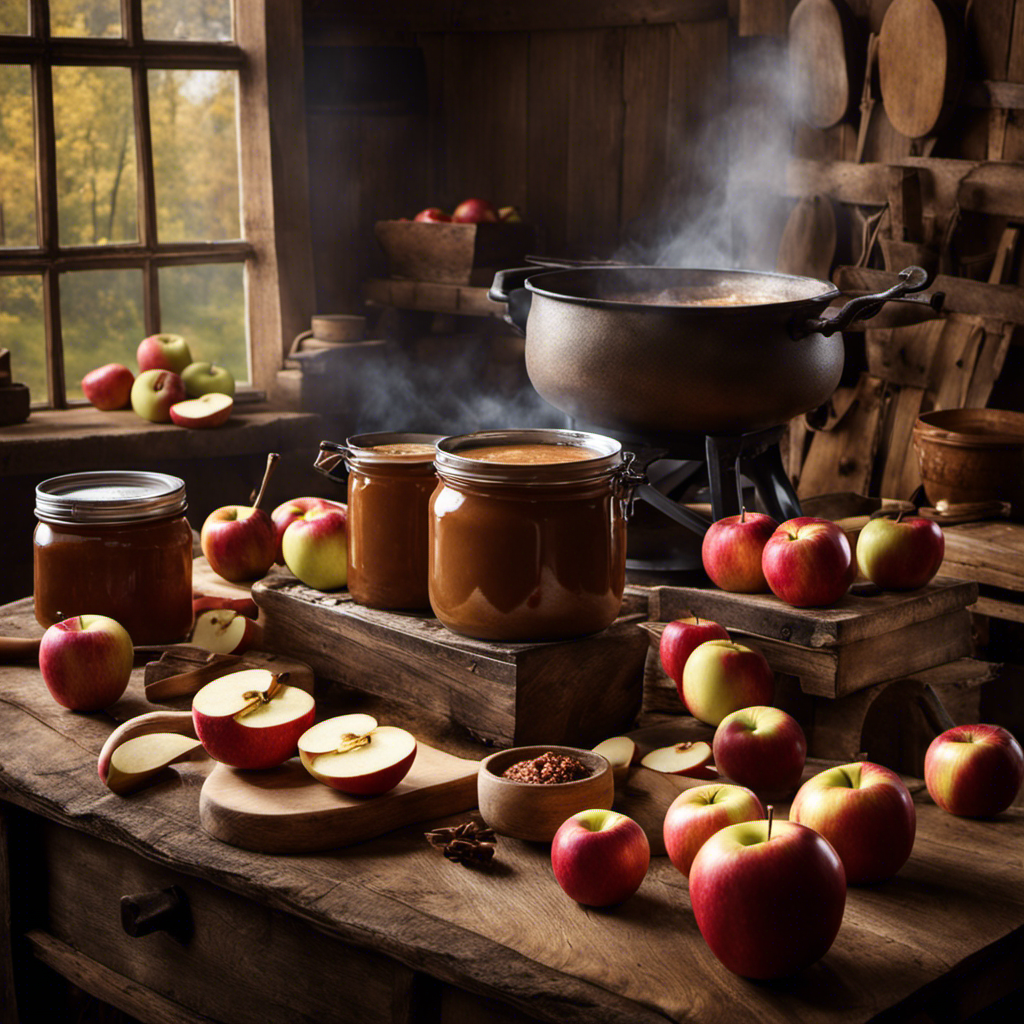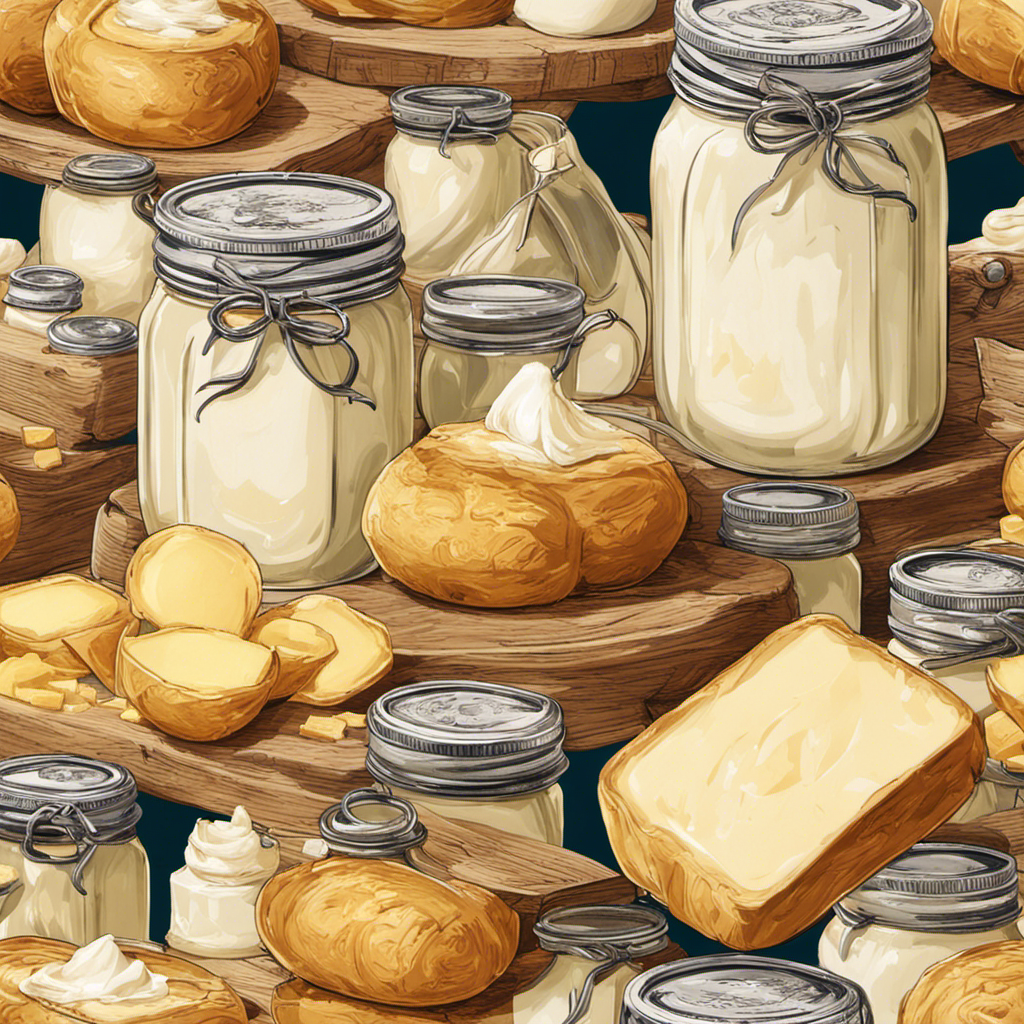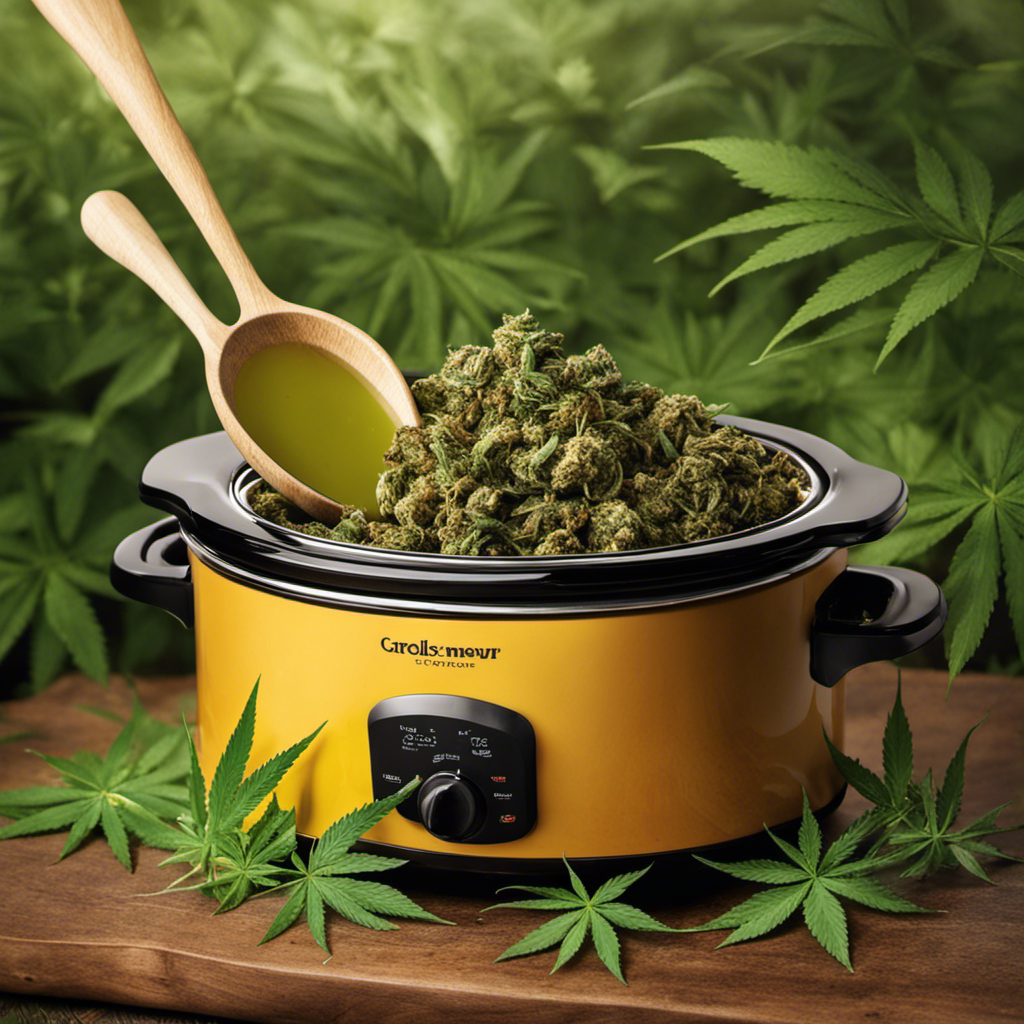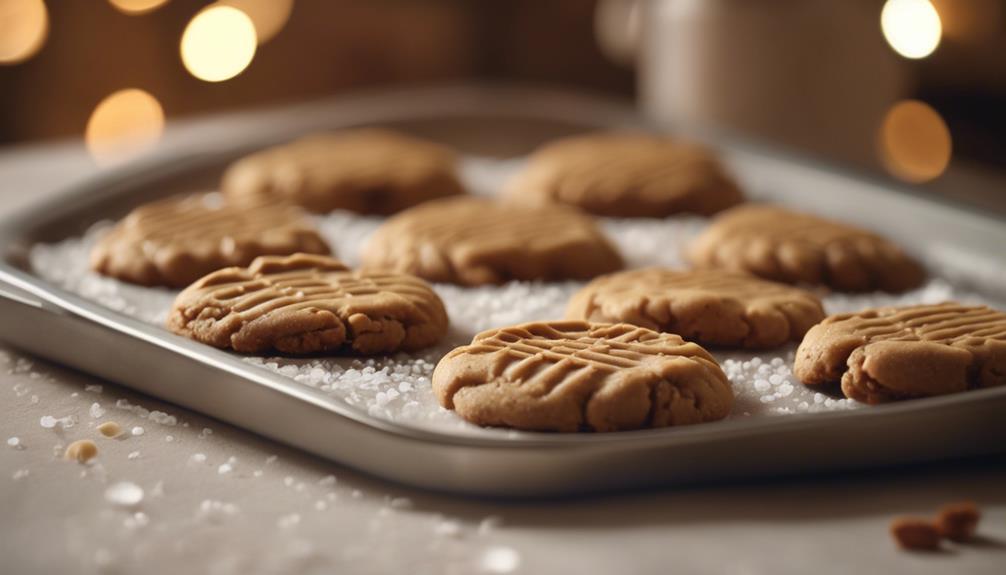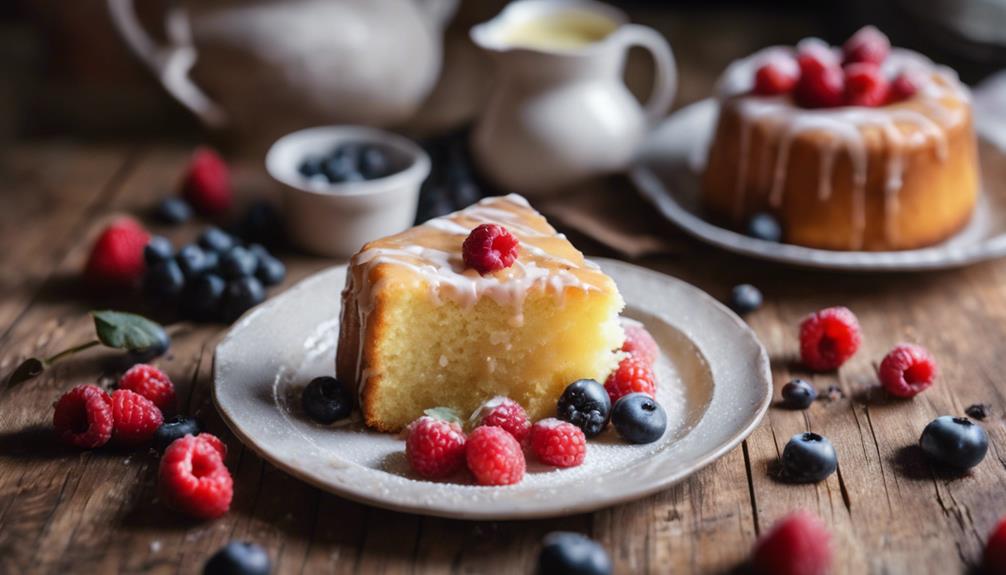Have you ever thought about how to make tasty apple butter using traditional methods? Well, you’re in luck! In this article, I will walk you through the detailed process of making this sweet and tangy spread from scratch.
From selecting the perfect apples to sterilizing the jars, I’ll provide detailed instructions to ensure your homemade apple butter turns out perfectly every time.
So, are you ready to dive into the world of homemade apple butter and savor its rich flavors? Let’s get started!
Key Takeaways
- Select ripe and flavorful apples for the best apple butter
- Peel and core the apples for a smooth and creamy texture
- Experiment with different spices to enhance the flavor profile
- Achieve the desired consistency through slow cooking and regular stirring
Selecting the Perfect Apples
To make the best apple butter, you should start by choosing apples that are ripe and flavorful. When it comes to apple varieties, there are numerous options to consider. Some popular choices for making apple butter include Granny Smith, Honeycrisp, and Jonathan apples. These varieties have the perfect balance of sweetness and tartness, which adds depth of flavor to the final product.
When it comes to apple picking, it’s important to choose apples that are at their peak ripeness. Look for apples that are firm to the touch, have a vibrant color, and a strong apple aroma. Avoid apples that are bruised, discolored, or have soft spots, as these may affect the quality of your apple butter.
Gathering the Necessary Ingredients
First, you’ll need to collect all the ingredients necessary for this recipe. In order to make the best apple butter, it’s crucial to select ripe apples. Look for apples that are firm, without any bruises or blemishes. Popular varieties for apple butter include Granny Smith, Gala, and Honeycrisp.
Now, let’s talk about the types of sweeteners you can use. Traditional apple butter is often sweetened with brown sugar or molasses for a rich flavor. However, you can also use honey or maple syrup for a natural sweetness. Experiment with different sweeteners to find the taste that suits your preference.
Once you have gathered all the ingredients, it’s time to move on to the next step: preparing the apples for cooking.
Transition: Now that we have all the necessary ingredients, let’s dive into the process of preparing the apples for cooking.
Preparing the Apples for Cooking
Now that you’ve gathered all the necessary ingredients, it’s time to start preparing the apples for cooking. Apple butter recipes can vary, and the type of apple you choose to use will greatly impact the flavor and texture of the final product. Here are three things to consider when preparing your apples:
-
Choose the right apple variety: Different apple varieties have varying levels of sweetness, tartness, and texture. Some popular choices for apple butter include Granny Smith, Fuji, and Jonathan apples. Experiment with different varieties to find the flavor profile you prefer.
-
Peel and core the apples: To ensure a smooth and creamy apple butter, it’s important to remove the peels and cores. You can use a peeler and corer or simply peel and core the apples by hand with a knife.
-
Cut the apples into small pieces: To speed up the cooking process and ensure even cooking, it’s best to cut the apples into small, uniform pieces. This will help them break down and soften more quickly.
Now that the apples are prepared, it’s time to move on to the next step: cooking them to make delicious apple butter.
Cooking the Apples
When it comes to cooking with apples, choosing the right variety is crucial for achieving the best flavor and texture in your dishes. In this discussion, we will explore the best apple varieties for cooking, taking into consideration their sweetness, tartness, and ability to hold their shape during cooking.
Additionally, we will delve into the cooking time required for different apple dishes, such as pies, sauces, and baked goods, to ensure that you have the perfect apple-cooking technique at your fingertips.
Best Apple Varieties
To find the best apple varieties for making apple butter, you’ll want to look for ones that are naturally sweet and have a firm texture. These are the key characteristics that will give your apple butter the perfect balance of flavor and consistency.
After researching various apple varieties and experimenting with different recipes, I have found that the following three varieties are particularly well-suited for making apple butter:
-
Honeycrisp: Known for its crispness and sweetness, the Honeycrisp apple adds a delicious complexity to your apple butter.
-
Granny Smith: With its tartness and firm texture, Granny Smith apples provide a refreshing contrast to the sweetness of the other ingredients in your apple butter.
-
Jonagold: This apple variety combines the best of both worlds, offering a balanced blend of sweetness and tartness that creates a harmonious flavor in your apple butter.
Cooking Time Required?
If you’re looking to reduce the cooking time required for your apple butter, try using a slow cooker instead of the traditional stovetop method. Slow cookers are a convenient and efficient way to prepare apple butter, allowing you to set it and forget it while it cooks to perfection. The low and slow cooking technique helps to intensify the flavors and create a rich and creamy texture.
Here is a simple recipe variation you can try using a slow cooker:
| Ingredients | Instructions |
|---|---|
| 10 apples | Peel, core, and slice the apples. Place them in the slow cooker. |
| 1 cup sugar | Sprinkle the sugar over the apples. |
| 1 tsp cinnamon | Add the cinnamon to the slow cooker. |
| 1/4 tsp nutmeg | Sprinkle the nutmeg over the apples. |
| 1/4 tsp cloves | Add the cloves to the slow cooker. |
| Cook on low for 8-10 hours | Stir occasionally to prevent sticking. |
| Blend until smooth | Use an immersion blender or transfer to a blender. |
| Store in jars | Allow the apple butter to cool before sealing and storing in the fridge. |
Using a slow cooker not only saves you time, but it also allows the flavors to develop more fully. Experiment with different ingredients and cooking techniques to find your perfect apple butter recipe.
Adding the Spices
Once you’ve finished cooking the apples down, you’ll want to start adding the spices. This is where the real magic happens and the flavor profile of your apple butter starts to come alive.
Here are three spice combinations that will take your apple butter to the next level:
-
Cinnamon and nutmeg: This classic combination adds warmth and depth to the apple butter, giving it that cozy, autumnal flavor.
-
Allspice and cloves: These spices bring a hint of earthiness and a touch of sweetness to the apple butter, creating a complex and flavorful profile.
-
Ginger and cardamom: For a more exotic twist, try adding ginger and cardamom. The spicy and slightly floral notes of these spices complement the sweetness of the apples beautifully.
Experiment with different spice combinations to find your favorite flavor profile. Don’t be afraid to get creative and make it your own!
Simmering the Mixture
When it comes to simmering the apple butter mixture, there are a few important factors to consider.
First, the optimal simmering time can greatly impact the final taste and texture of the apple butter.
Second, temperature control techniques are crucial for ensuring that the mixture cooks evenly and doesn’t burn.
Finally, experimenting with flavor-enhancing ingredient combinations can take your apple butter to the next level, adding depth and complexity to the overall taste.
Optimal Simmering Time
The optimal simmering time for apple butter is typically around two to three hours. This allows the flavors to meld together and the mixture to thicken to the desired consistency. Simmering techniques play a crucial role in achieving the perfect apple butter.
Here are some tips to help you along the way:
- Use a heavy-bottomed pot to ensure even heat distribution.
- Stir the mixture regularly to prevent scorching and promote even cooking.
- Adjust the sweetness by adding sugar or other sweeteners to taste.
By following these simmering techniques, you can create a delicious batch of apple butter with just the right balance of flavors.
Now, let’s move on to the next step: temperature control techniques.
Temperature Control Techniques
To achieve the desired consistency of your apple butter, you’ll want to focus on controlling the temperature throughout the cooking process.
Temperature control is crucial in ensuring that your apple butter turns out perfectly smooth and creamy.
One technique you can use is to start cooking the apples at a high temperature to break them down quickly. Once they have softened, reduce the heat to a gentle simmer.
This slow and steady simmer will allow the flavors to develop and the apples to caramelize without burning.
Another technique is to use a candy thermometer to monitor the temperature. Ideally, you want to maintain a temperature of around 220°F (104°C) to achieve the perfect consistency.
Flavor-Enhancing Ingredient Combinations
Using a combination of cinnamon, nutmeg, and cloves can enhance the flavor of your apple butter. These spices are known for their warm and aromatic qualities, making them the perfect complementing flavors for the sweet and tangy taste of apples. Traditional recipes often include these spices to create a rich and flavorful apple butter that is reminiscent of homemade goodness.
To fully enjoy the flavor of your apple butter, consider the following tips:
- Use freshly ground spices for a more intense and fragrant flavor.
- Experiment with the ratios of cinnamon, nutmeg, and cloves to find the perfect balance that suits your taste.
- Add a hint of vanilla extract to enhance the overall flavor profile.
Monitoring the Consistency
Check if your apple butter is the desired consistency by spooning a small amount onto a plate and seeing if it holds its shape. This is one of the testing techniques that can help you determine if your apple butter is done cooking. If it holds its shape and doesn’t spread out on the plate, then congratulations, you have achieved the perfect consistency!
However, if it’s too runny and spreads out, it means that your apple butter needs more cooking time. Troubleshooting tips include continuing to cook the apple butter over low heat, stirring frequently to prevent scorching, and adding a small amount of lemon juice or pectin to help thicken it. Remember, the consistency of apple butter should be thick and spreadable, similar to peanut butter.
Now that you know how to test the consistency, let’s move on to testing for doneness in the next section.
Testing for Doneness
When it comes to determining if a dish is done cooking, there are several reliable methods that can be used.
One common indicator is cooking time, which can be helpful in giving a general idea of when the dish should be finished.
However, it is also important to pay attention to color and texture cues, as these can provide more accurate information about doneness.
Additionally, the spoon or plate test can be a useful tool in assessing the readiness of a dish, as it allows you to see the consistency and texture firsthand.
Cooking Time Indicators
To gauge the cooking time, rely on visual cues like the deepening color and thickening consistency of the apple butter. These indicators will help determine when the apple butter is ready to be taken off the heat and cooled.
Here are some cooking techniques and recipe variations to consider:
-
Slow Cooker Method: Cook the apples on low heat for 8-10 hours, stirring occasionally, until the apple butter reaches the desired consistency.
-
Stovetop Method: Simmer the apples on low heat for 2-3 hours, stirring regularly, until the apple butter thickens and turns a deep brown color.
-
Oven Method: Bake the apples in a covered dish at 250°F for 3-4 hours, stirring every hour, until the apple butter is dark and thick.
Color and Texture Cues
To achieve the desired color and texture of your apple butter, keep an eye on the deepening color and the thickening consistency as you cook it. The color preservation of apple butter is important to maintain its visual appeal and to indicate proper cooking. As the apples cook down, they undergo a chemical process called caramelization, which gives the apple butter its rich, dark color. Traditional canning methods can help preserve this color and extend the shelf life of your apple butter. Here is a table highlighting the color and texture cues to look out for:
| Color | Texture | Indication |
|---|---|---|
| Light brown | Thin and runny | Not cooked enough |
| Dark brown | Thick and spreadable | Cooked to perfection |
| Burnt or black | Sticky and clumpy | Overcooked |
Spoon or Plate Test
After simmering the apple butter for hours, it’s time to check if it has reached the desired consistency. The spoon or plate test is a reliable method to determine if the apple butter is ready to be canned.
To perform the spoon or plate test, simply dip a spoon or plate into the apple butter and let it cool for a few seconds. If it forms a thick coating that doesn’t run off, it’s done.
Here are some troubleshooting tips to keep in mind while conducting the test:
- If the apple butter is too runny, continue cooking it for a bit longer.
- If it’s too thick, add a small amount of water or apple juice and stir until desired consistency.
- If the apple butter tastes too sweet or tart, adjust the flavor by adding a bit of lemon juice or sugar, respectively.
Now that we have checked the apple butter’s consistency, it’s time to move on to the next step: sterilizing the jars.
Sterilizing the Jars
First, make sure you’ve washed and dried all the jars thoroughly.
Sterilization techniques are crucial when preserving apple butter to ensure its safety and longevity.
To sterilize the jars, begin by preheating the oven to 225°F. Place the jars, lids, and bands on a baking sheet and put them in the oven for 10 minutes. This will kill any bacteria or microorganisms that may be present.
Alternatively, you can use a large pot of boiling water to sterilize the jars. Place the jars, lids, and bands in the pot and let them boil for 10 minutes.
After sterilization, remove the jars from the oven or pot using tongs and let them cool on a clean towel.
Now you’re ready to fill the jars with your delicious homemade apple butter.
Filling and Sealing the Jars
Now that the jars are sterilized and cooled, you can start filling them with your delicious homemade apple butter. It’s important to take care during this step to ensure the preservation of your apple butter. Here are three tips to help you enjoy the process:
- Use a funnel: A funnel will make it easier to pour the apple butter into the jars without making a mess.
- Leave headspace: Leave about 1/4 inch of headspace at the top of each jar to allow for expansion during the sealing process.
- Wipe the rims: Before sealing the jars, make sure to wipe the rims clean with a damp cloth to remove any residue that could prevent a proper seal.
By following these sterilization techniques and preserving methods, you can be confident that your homemade apple butter will be safely stored for future enjoyment.
Now, let’s move on to the next step: storing and enjoying your homemade apple butter.
Storing and Enjoying Your Homemade Apple Butter
To ensure optimal flavor and longevity, it’s essential to properly store your homemade apple butter in a cool, dry place.
After you have made your delicious apple butter using your favorite homemade apple butter recipe, it’s time to think about how to store it for future enjoyment.
Canning equipment plays a vital role in keeping your apple butter fresh. Use glass jars with tight-fitting lids to seal your apple butter. It’s important to sterilize the jars and lids before filling them with the apple butter to prevent any bacterial growth. Once filled, make sure to tighten the lids securely to create an airtight seal.
Store the jars in a cool, dry place away from direct sunlight. This will help maintain the flavor and quality of your apple butter for a longer period.
Frequently Asked Questions
Can I Use Any Type of Apples to Make Apple Butter?
Yes, you can use any type of apples to make apple butter. However, some apple varieties are better suited for making apple butter due to their sweetness and flavor. Here are some tips for choosing the best apples for apple butter.
How Long Does It Take for the Apple Butter to Reach the Desired Consistency?
To reach the desired consistency for apple butter, it can take anywhere from 4 to 6 hours of cooking on low heat. Stir occasionally and add small amounts of water if needed.
Can I Substitute Any of the Spices in the Recipe?
Sure, you can definitely substitute spices in the recipe. Some alternative spices for apple butter could be cinnamon, nutmeg, allspice, or even cardamom. It all depends on your personal taste preferences.
How Long Can I Store Homemade Apple Butter?
I store homemade apple butter for up to 1 year. The shelf life can be extended by using proper preserving methods such as canning or freezing. It’s important to follow safe food storage guidelines to ensure freshness.
Can I Use Plastic Containers Instead of Glass Jars for Storing the Apple Butter?
I can use plastic containers for storing apple butter, but there are pros and cons. Plastic containers are lightweight and won’t break, but they may not provide the same airtight seal as glass jars, impacting the shelf life and quality of the apple butter.
Conclusion
As I placed the last jar of homemade apple butter on the shelf, a sense of accomplishment washed over me. The hours spent selecting the perfect apples, gathering the necessary ingredients, and carefully preparing and cooking the apples were all worth it. Now, I couldn’t wait to share this old-fashioned delight with my family and friends.
But, there was one more step to complete before indulging in the sweet, spiced goodness. I took a step back, admiring the rows of jars, filled to the brim, and wondered – how long until I can finally savor the taste of my labor?
